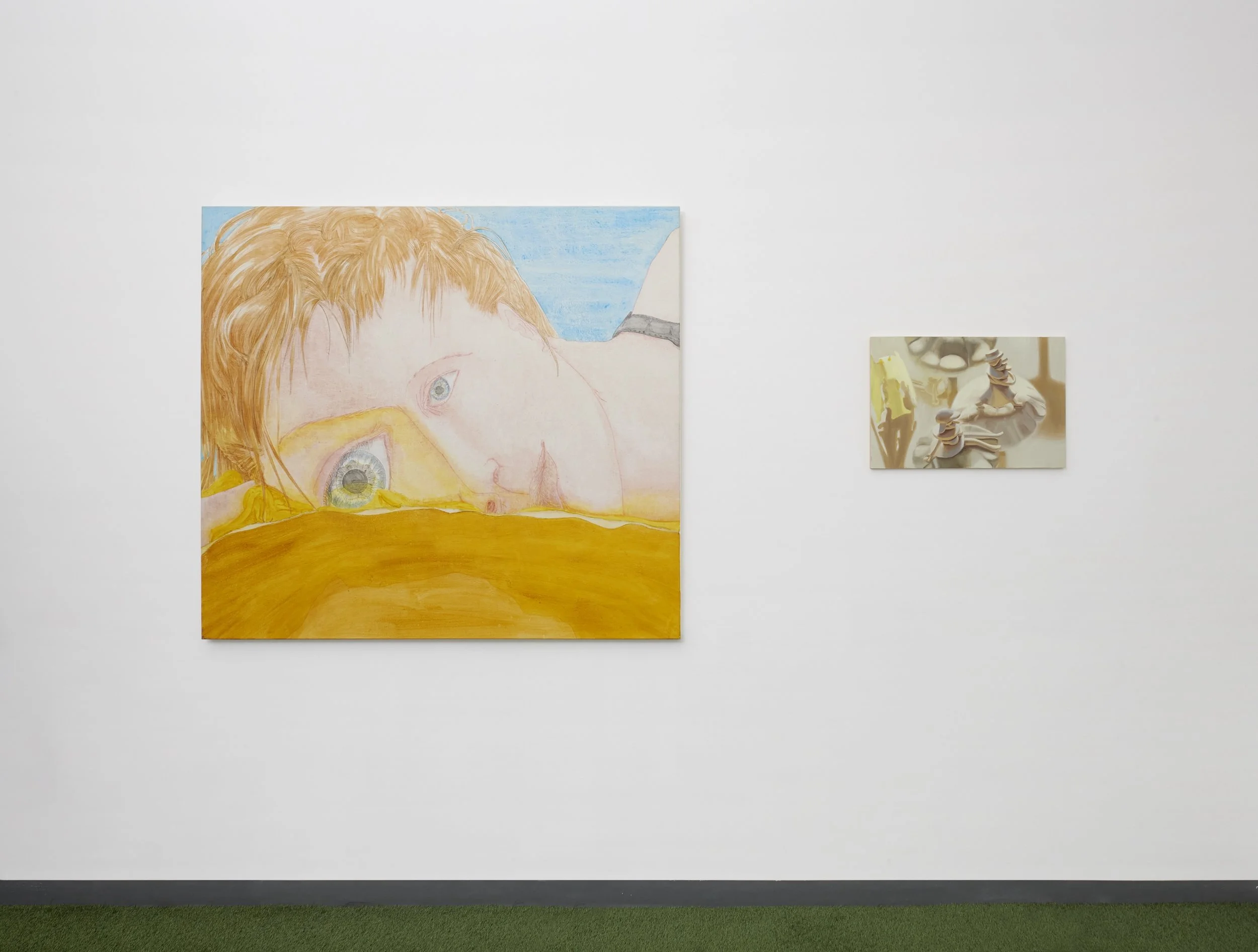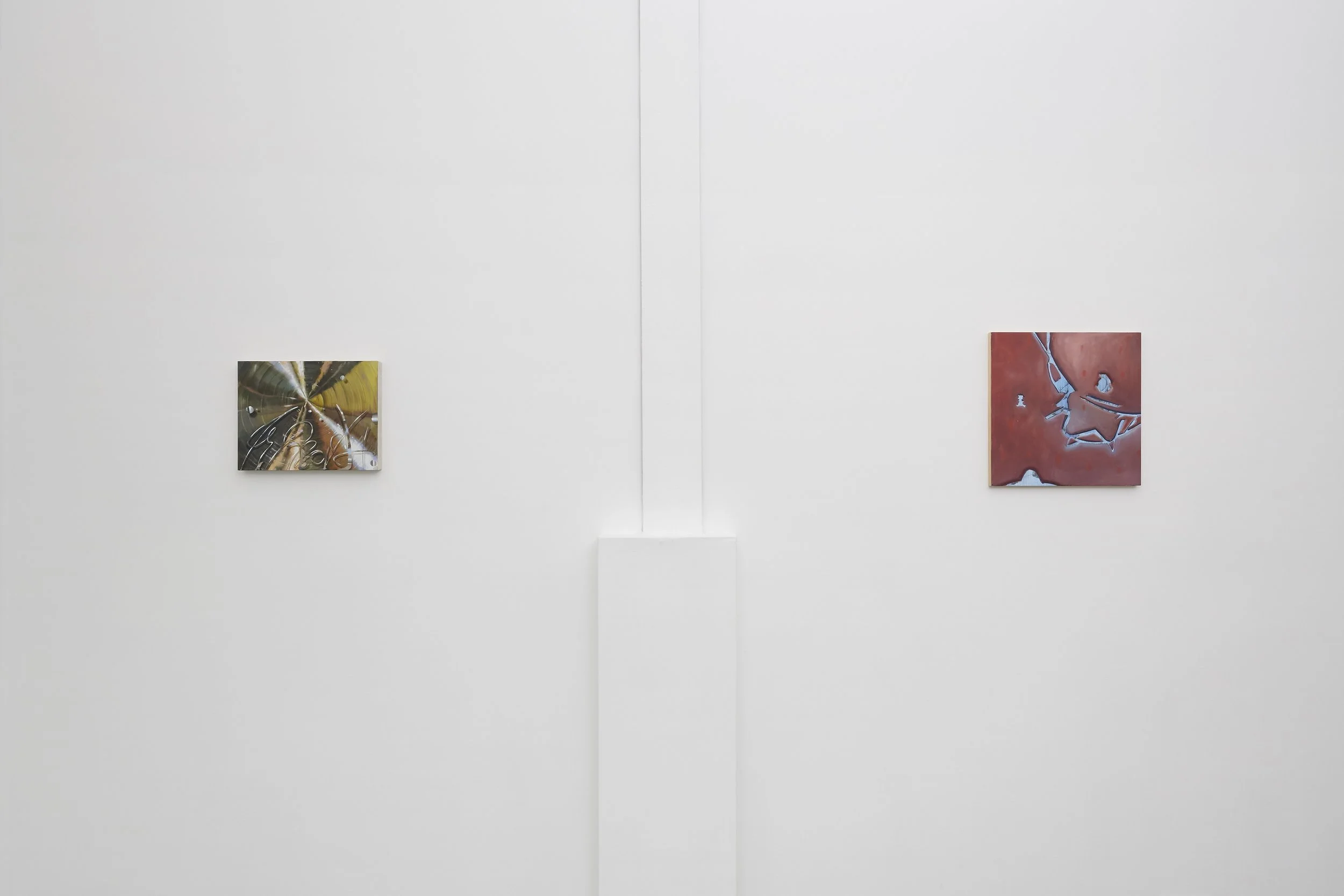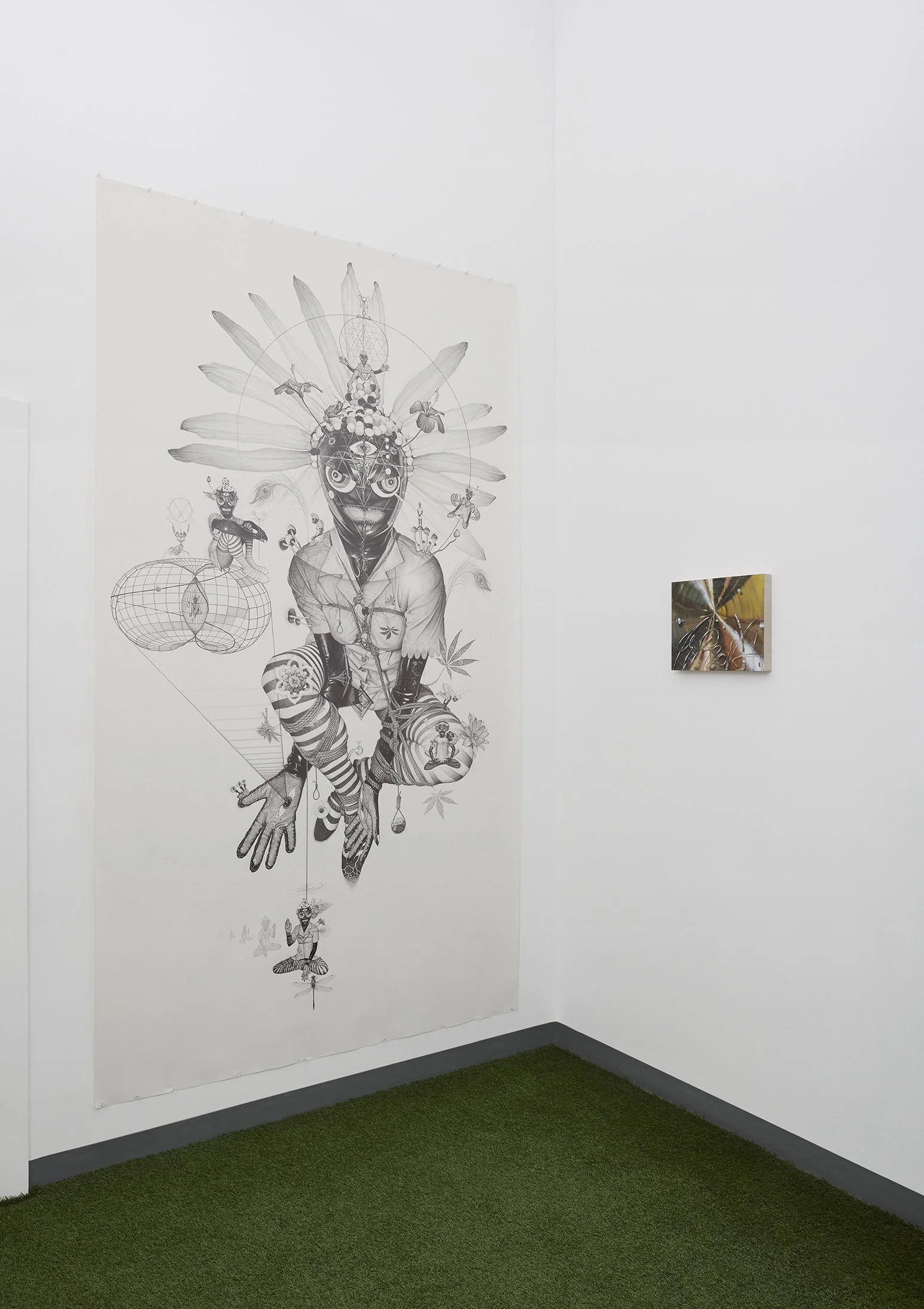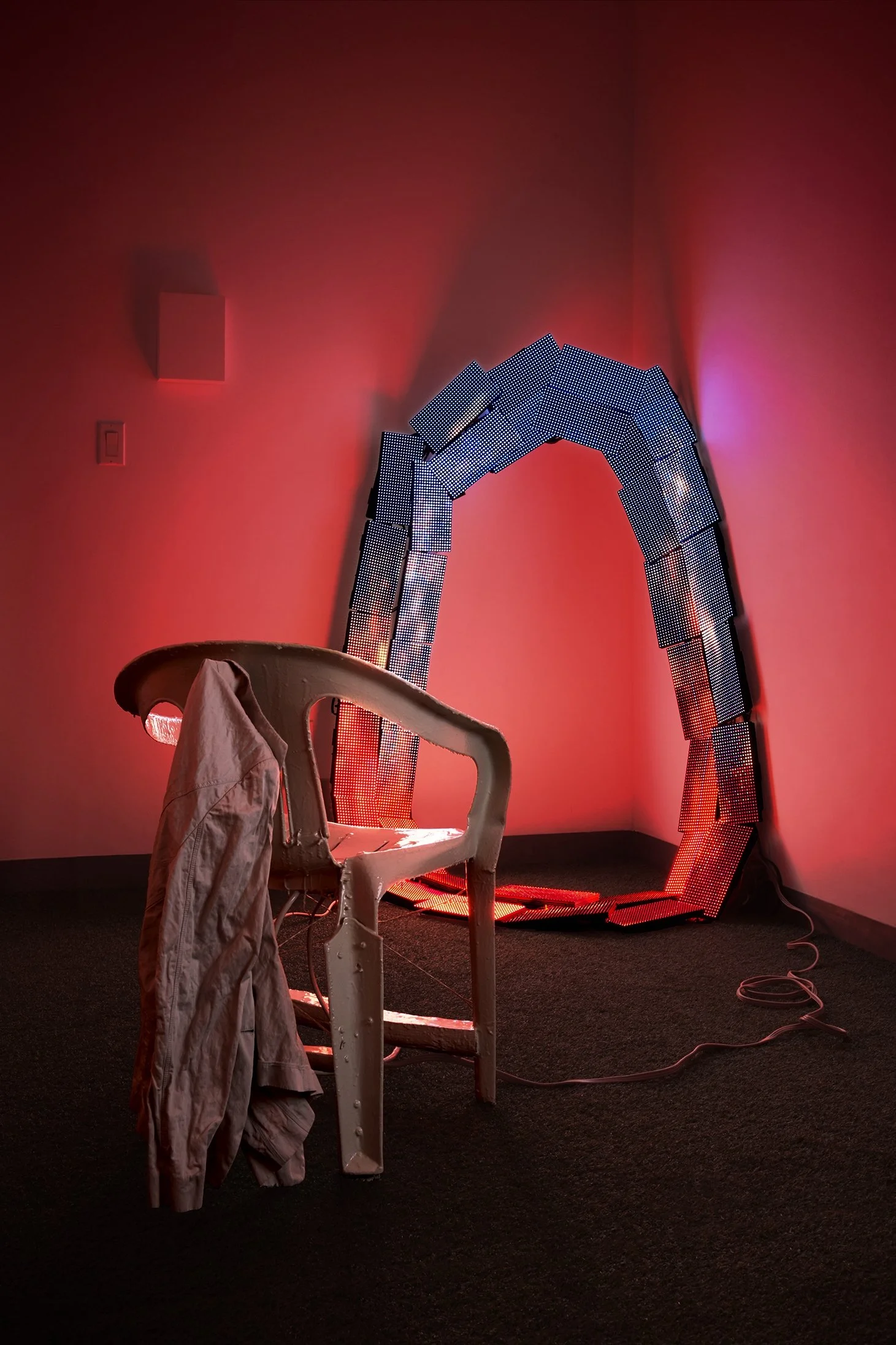BEAMSPLITTER
Kalina Winters, Gavin Wilson, Lauren Anaïs Hussey, Luke Murphy/Michael Ballou, and Scott Grodesky
Curated by David Shaw
November 12, 2025 - January 4, 2026
Opening Reception November 12, 2025 6-8 PM
Field of Play presents Beamsplitter, a group exhibition curated by David Shaw. The title references an optical device used to analyze the fundamental nature of light by dividing it into separate beams. While this tool is critical to our understanding of quantum mechanics, light continues to evade a clear definition. Similarly, our sentience defies a location: try as we might, we have yet to discover the seat of consciousness in the brain or elsewhere. The six artists included in Beamsplitter challenge the surety of our consciousness through an examination of duality, introspection, and the nature of light, both inner and outer.
Kalina Winters paintings look like aerial views of excavations, archeological sites, or maybe arboglyphs carved into otherworldly trees. Her ideas seem timeless yet somehow still in their infancy. The trompe l’oeil cavities she creates serve as primitive cyphers for distant aspects of identity. Her characters, voids, and scars “are intangible, like math visuals or meditation, concepts you can’t hold, but can still sense and build around.” Her paintings are a veil we see through to the specter of self.
Gavin Wilson’s exploration of identity takes quite a different form. Investigating psychedelics, nonduality and disguise, Wilson creates monumental graphite drawings that he considers a “blueprint of the self.” These intricately detailed drawings approach his subject matter from all angles simultaneously, creating a symbolic portal to parallel universes, in which he creates multidimensional maps of an extremely complex identity complex.
Lauren Anaïs Hussey pretends to tell us things, but her language is more a script before words. “Bleap” is like viewing an idea you are about to have forming on your very own retina. Her work becomes mostly about looking into a precognitive space of pure possibility.
Luke Murphy and Michael Ballou have teamed up to create “Fire Ring and Geech Chair.” Murphy codes open ended systems whose patterns never repeat onto LED panels. In “Fire Ring and Geech Chair” a digital ovoid fire forms a vortex into an infinity hole, the mechanics of which are under the discarded furniture Ballou repairs “like a tinkering angel.” Together they create the seat from which one views the void it creates. The collaboration becomes a self reflexive meditation site, an event horizon viewing itself.
Scott Grodesky has been utilizing his own take on reverse perspective for over 35 years. “Sara on the Beach” is a deeply intimate portrait that catches the subject in an exaggerated act of looking. It is our looking at her looking that begins the introspective entanglement loop where understanding one half of a relationship instantly reveals information about the other. This interference of shared histories, separation, and reality as a singular, indivisible whole generously includes us in the uncertainty of the observer and the observed.
“Cogito cogito ergo cogito sum.”
“I think that I think therefore I think that I am.”
—Ambrose Bierce—





